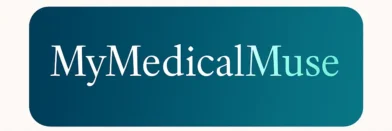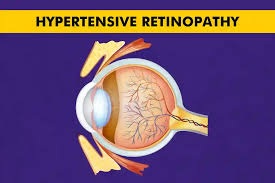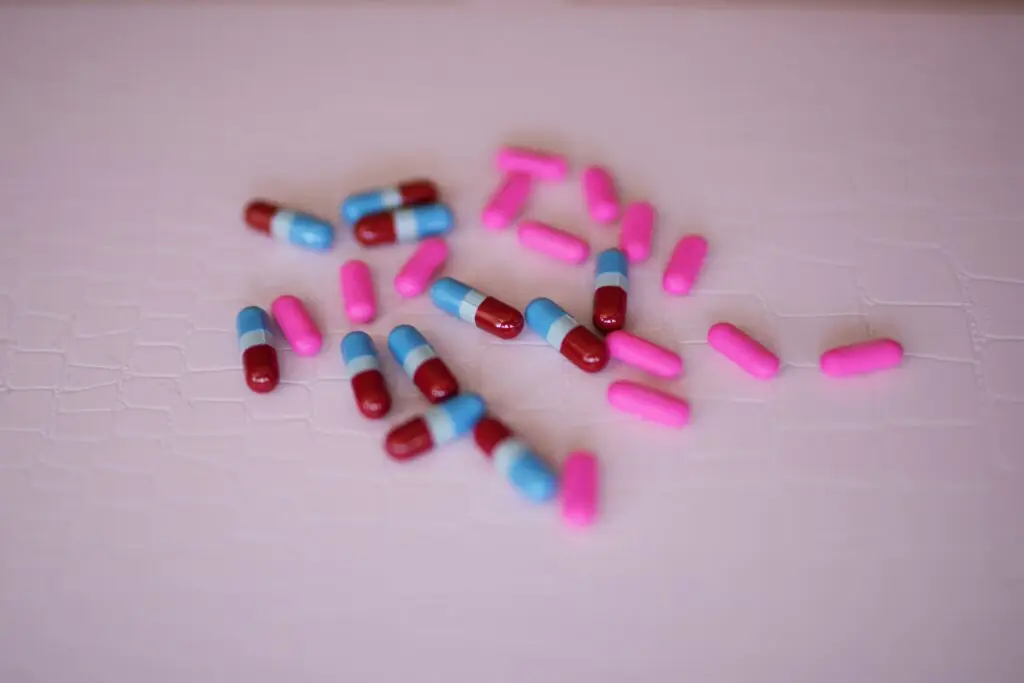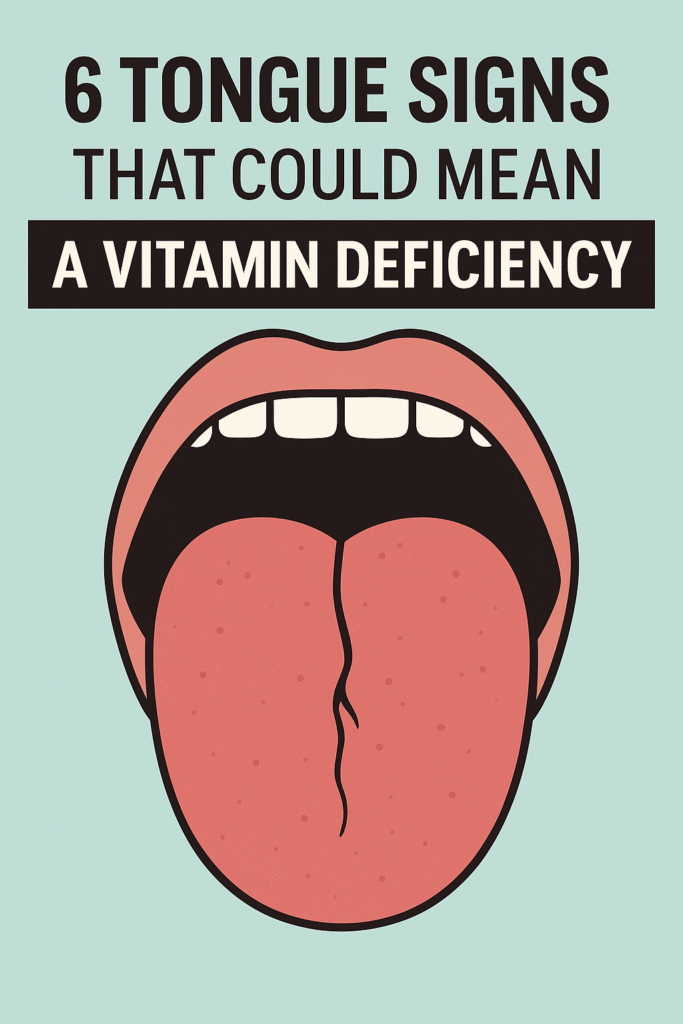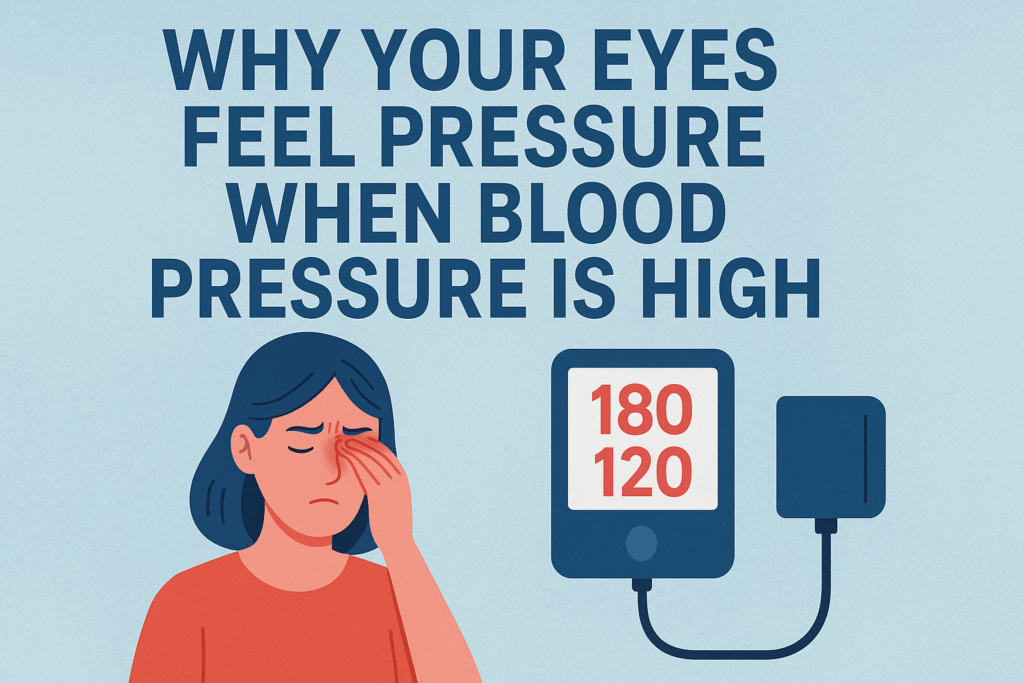
⚠️ Affiliate Disclaimer: This post may contain affiliate links, which means I may earn a small commission — at no extra cost to you — if you make a purchase through one of these links. I only recommend products or services I genuinely trust and believe can provide value. Thank you for supporting My Medical Muse!
7 Critical Reasons Why Your Eyes Feel Pressure When Blood Pressure Is High (and How to Relieve It)
Table of Contents
- Introduction: When Eye Pressure Meets Blood Pressure
- How High Blood Pressure Affects the Eyes
- Reason 1: Hypertensive Retinopathy – Damage to the Eye’s Blood Vessels
- Reason 2: Increased Ocular Pressure and Glaucoma Risk
- Reason 3: Fluid Retention and Eye Swelling
- Reason 4: Headache and Eye Strain from Vascular Tension
- Reason 5: Sudden Blood Pressure Spikes (Hypertensive Crisis)
- Reason 6: Medication Side Effects That Affect Eye Pressure
- Reason 7: Underlying Eye or Neurological Disorders
- When to See a Doctor Immediately
- How to Relieve Eye Pressure Naturally and Safely
- Long-Term Prevention: Protecting Your Eyes and Blood Vessels
- Key Takeaways
Introduction: When Eye Pressure Meets Blood Pressure
You’re sitting quietly, maybe reading, watching TV or scrolling through your phone. When you suddenly feel a strange pressure behind your eyes, it’s not exactly sharp pain, but more of a deep fullness or heaviness, like your eyes are under strain. Sometimes it’s accompanied by a mild headache or blurry vision and other times it just lingers uncomfortably.
If you also have high blood pressure (hypertension), it’s natural to wonder, could these eye sensations be connected?
The answer is yes, in many cases, they are.
High blood pressure doesn’t just affect your heart and arteries; it impacts the tiny, delicate network of blood vessels inside your eyes, some of the smallest and most sensitive in your entire body. Over time, sustained high pressure can make these vessels narrow, thickened, or leaky, disrupting normal circulation and triggering uncomfortable sensations such as:
- A feeling of pressure or fullness behind the eyes
- Blurry or fluctuating vision
- Eye pain, strain, or heaviness, especially after focusing for long periods
- Headaches that worsen during stress or exertion
Your eyes and cardiovascular system are closely linked. When your blood pressure rises, the same force that damages large arteries can also stress the fragile capillaries of the retina and optic nerve.
In this guide, we’ll explore the seven most likely reasons, why your eyes feel pressure when your blood pressure rises and, more importantly, how to protect your vision before lasting complications occur.
How High Blood Pressure Affects the Eyes
Your eyes are powered by an incredibly fine vascular network, a web of microscopic arteries and veins that supply oxygen and nutrients to essential structures like the retina, macula, and optic nerve.
When your blood pressure remains elevated, these tiny vessels are constantly subjected to excessive force. Over time, that pressure can:
- Thicken vessel walls, reducing oxygen and nutrient delivery to the retina
- Cause small leaks of blood or fluid, leading to retinal swelling and distortion
- Trigger inflammation and oxidative stress, damaging sensitive retinal cells
- Alter fluid balance in the eye, indirectly increasing intraocular pressure (IOP)
The result? You may experience an internal sense of pressure, tightness, or heaviness around the eyes, even when there’s no direct pain.
While mild, temporary eye pressure can happen after fatigue or dehydration, persistent sensations are often an early warning sign that high blood pressure is affecting your ocular circulation.
Let’s break down the specific conditions and mechanisms behind this.
1. Hypertensive Retinopathy: Damage to the Eye’s Blood Vessels
One of the most common, and often silent reasons for eye pressure in people with hypertension is hypertensive retinopathy. This condition occurs when prolonged high blood pressure damages the tiny arteries in the retina, the light-sensitive layer that allows you to see.
What Happens
- The retinal arteries narrow and stiffen, reducing their ability to carry oxygen-rich blood.
- Blood flow becomes restricted, depriving retinal tissue of vital nutrients.
- Microscopic leaks or hemorrhages (microbleeds) may develop, leaving behind tiny yellow or red spots visible on eye exams.
- Fluid can accumulate, causing swelling in the retina or optic disc, often experienced as a sense of pressure or heaviness behind the eyes.
Symptoms
- A persistent tightness or pressure behind one or both eyes.
- Blurred or distorted vision, especially during blood pressure spikes.
- Difficulty focusing, particularly after standing up or after physical exertion
- Sometimes, no noticeable symptoms at all until the condition becomes advanced
Hypertensive retinopathy isn’t just an eye issue, it’s a reflection of vascular health throughout your body. If left untreated, the same changes damaging your retina may also be occurring in your kidneys, brain, or heart.
In severe cases, this retinal damage can progress to:
- Retinal detachment, where the retina pulls away from its blood supply.
- Optic nerve damage, causing partial vision loss.
- Permanent blindness, if the retinal tissue dies from lack of oxygen.
The good news is that early detection and proper blood pressure management can often reverse or halt the progression of hypertensive retinopathy. Regular eye exams with retinal imaging are crucial, especially if you have known hypertension or diabetes.
2. Increased Ocular Pressure and Glaucoma Risk
While high blood pressure doesn’t always directly cause glaucoma, it can exacerbate eye pressure issues that increase your risk.
Your eyes continuously produce and drain a clear fluid called aqueous humor, which maintains the eye’s shape and provides nutrients to internal structures. When the drainage pathways are blocked or impaired, fluid builds up, raising intraocular pressure (IOP), a major risk factor for glaucoma.
High blood pressure can affect this delicate system by:
- Increasing blood flow and filtration in the tiny capillaries of the eyes
- Disrupting the balance between fluid production and drainage
- Raising pressure in optic nerve vessels, which can strain nerve fibers
Result
This imbalance often manifests as a deep, heavy pressure behind the eyes, sometimes described as the eyes being “pushed outward.”
For individuals who already have early glaucoma, elevated blood pressure can accelerate optic nerve damage, even if measured IOP seems normal. Over time, this can lead to peripheral vision loss or even blindness if left unmanaged.
3. Fluid Retention and Eye Swelling
People with poorly controlled hypertension often experience fluid retention (edema), particularly around the face and eyes.
When blood pressure is high, capillaries can leak fluid into surrounding tissues, causing swelling. Around the eyes, this can create:
- Puffiness or swelling of the eyelids
- Tightness or fullness in the eye sockets
- Mild pressure discomfort
Many people notice that puffy eyelids and a heavy feeling behind the eyes are more pronounced in the morning. This is often due to fluid redistribution during sleep. Contributing factors include:
- High sodium intake
- Kidney dysfunction
- Certain hypertension medications, such as calcium channel blockers or corticosteroids
Although generally mild, chronic fluid retention can increase eye pressure sensations and make visual tasks more uncomfortable.
4. Headache and Eye Strain from Vascular Tension
When blood pressure spikes, the blood vessels in your head and neck constrict and dilate rapidly, creating vascular instability that affects the eyes.
Symptoms
This vascular tension can trigger:
- Tension headaches, particularly behind or around the eyes
- Migraine-like pressure sensations that feel deep and throbbing
- Visual disturbances, such as blurred vision or light sensitivity
- Eye strain, especially after reading, screen use, or physical exertion
Often, people mistake these symptoms for direct eye pressure. In reality, the muscles and blood vessels surrounding the eyes are reacting to increased blood flow and oxygen demand, producing that sensation of heaviness or pressure.
5. Sudden Blood Pressure Spikes (Hypertensive Crisis)
A hypertensive crisis occurs when blood pressure rises above 180/120 mmHg, a dangerous, potentially life-threatening situation.
Symptoms
During a hypertensive crisis, you may experience:
- Intense pressure or pain behind the eyes
- Blurred or double vision
- Nosebleeds
- Severe headaches
- Chest pain or shortness of breath
Why It Feels Like Eye Pressure
In this scenario, the sudden, extreme force can cause blood vessels in the retina to rupture or leak, resulting in acute swelling. This produces a rapid, throbbing sensation of pressure in or behind the eyes. Immediate medical attention is crucial. Untreated hypertensive crises can lead to:
- Stroke
- Heart attack
- Permanent vision loss
Even if you normally have well-controlled blood pressure, sudden spikes can occur, emphasizing the importance of regular monitoring and knowing your warning signs.
6. Medication Side Effects That Affect Eye Pressure
Some blood pressure medications can indirectly cause sensations of eye pressure, particularly when you first start them or if the dose is too high.
Common Culprits:
- Beta-blockers: May reduce blood flow to the optic nerve, sometimes causing mild pressure or heaviness.
- Calcium channel blockers: Can subtly affect intraocular pressure (IOP) in sensitive individuals.
- Diuretics: By altering fluid and electrolyte balance, they can impact fluid levels in the eyes, leading to temporary discomfort.
These effects are generally temporary and often improve as your body adjusts to the medication. If eye pressure persists, consult your doctor, sometimes adjusting the dose or switching medications can resolve the issue without compromising your blood pressure control.
7. Underlying Eye or Neurological Disorders
Sometimes, high blood pressure reveals an existing eye or neurological condition that was previously unnoticed.
- Optic neuritis: Inflammation of the optic nerve that can cause pain with eye movement.
- Sinus congestion or infection: Pressure in the sinus cavities can radiate to the eyes.
- Cluster headaches: Severe, localized headaches that often affect one eye.
- Intracranial pressure increases: Neurological issues that create additional pressure in the eye sockets.
When to Act
If the sensation of eye pressure is persistent, worsens with movement, or comes with vision changes, it’s important to schedule a comprehensive eye and neurological exam. Early detection is key to preventing permanent damage.
When to See a Doctor Immediately
Seek immediate medical attention if you experience:
- Sudden or severe eye pain
- Vision loss or double vision
- Flashing lights or floaters in vision
- Nausea, vomiting, or confusion
- Blood pressure readings above 180/120 mmHg
These symptoms may indicate a hypertensive emergency, retinal detachment, or acute glaucoma, all requiring urgent medical intervention.
How to Relieve Eye Pressure Naturally and Safely
If your eye pressure is mild and not a medical emergency, there are several safe strategies to help relieve discomfort and protect your vision. These steps focus on reducing vascular strain, improving blood flow, and supporting eye health.
1. Control Your Blood Pressure:
- Monitor at home daily to track trends and detect spikes early.
- Take prescribed medications consistently as directed by your doctor.
- Reduce sodium intake, aim for less than 1,500 mg per day to help lower blood pressure naturally.
- Maintain a healthy weight and incorporate regular physical activity such as walking, swimming, or cycling to improve cardiovascular health.
2. Improve Circulation to the Eyes
- Blink frequently during prolonged screen time to keep eyes hydrated and reduce strain.
- Follow the 20-20-20 rule: every 20 minutes, look at an object 20 feet away for 20 seconds.
- Use a warm compress over closed eyes to relax ocular muscles and improve blood flow.
3. Manage Stress and Cortisol:
Chronic stress elevates blood pressure and can contribute to eye pressure. Effective stress management techniques include:
- Deep breathing exercises or meditation
- Yoga, walking, or light aerobic exercise
- Limiting caffeine and alcohol, both of which can temporarily increase blood pressure
4. Stay Hydrated
- Proper hydration helps maintain normal intraocular pressure. Drink sufficient water throughout the day, but avoid excessive intake if you have heart or kidney conditions.
- Balanced hydration also supports healthy blood circulation and reduces vascular strain around the eyes.
5. Review Medications:
- If eye pressure began after starting a new blood pressure medication, consult your doctor.
- Adjusting the dose or switching medications may relieve eye discomfort while still controlling blood pressure effectively.
- Never stop prescription medications on your own without medical guidance.
By incorporating these strategies consistently, you can often reduce eye pressure, prevent discomfort, and support long-term ocular health, all while maintaining better blood pressure control.
Long-Term Prevention: Protecting Your Eyes and Blood Vessels
Your eyes and cardiovascular system are closely linked. Healthy blood vessels not only support good vision but also protect your heart, brain, and kidneys. Taking proactive steps can help prevent eye pressure, vascular damage, and long-term complications associated with high blood pressure.
Routine Monitoring:
- Schedule a comprehensive eye exam at least once a year, particularly if you have hypertension or diabetes.
- Ask your eye doctor to assess retinal vessel health, optic nerve function, and intraocular pressure.
- Regular monitoring can detect early changes, allowing for timely interventions before irreversible damage occurs.
Balanced Diet for Eye and Vascular Health
- Include foods rich in lutein, zeaxanthin, omega-3 fatty acids, and vitamin C, which support retinal and vascular health.
- Focus on leafy greens (spinach, kale), eggs, salmon, citrus fruits, and nuts.
- Limit processed foods, added sugars, excessive salt, and trans fats, which contribute to hypertension and vascular strain.
- Maintaining a nutrient-rich diet can reduce inflammation, improve blood flow, and support long-term eye and heart health.
Sleep and Posture:
- Aim for 7-8 hours of quality sleep nightly to allow your body to regulate blood pressure naturally.
- Avoid sleeping face-down or in positions that increase intraocular pressure.
- Proper posture and restful sleep reduce eye strain and vascular stress, which helps prevent eye pressure sensations.
Avoid Smoking:
- Smoking narrows blood vessels, reduces oxygen delivery to the eyes, and amplifies hypertension-related damage.
- Quitting smoking significantly reduces your risk of eye pressure complications, vascular disease, and long-term cardiovascular problems.
- Combining smoking cessation with blood pressure control and a healthy lifestyle offers the best protection for your eyes and overall health.
Key Takeaways
Feeling pressure in your eyes during episodes of high blood pressure is more than just a minor discomfort, it’s often a sign that your vascular system is under stress. Common causes include hypertensive retinopathy, increased ocular pressure, fluid retention, or vascular tension. Recognizing these symptoms early can help prevent long-term damage to both your eyes and overall health.
Here’s what you should remember:
- Eye pressure is a warning sign: Your eyes are sensitive indicators of cardiovascular strain. Persistent heaviness, fullness, or tightness should never be ignored.
- Regular monitoring is essential: Keep track of your blood pressure at home, attend routine eye exams, and report any new or unusual symptoms promptly.
- Healthy lifestyle habits matter: Maintaining a balanced diet, staying hydrated, managing stress, exercising regularly, and avoiding smoking all contribute to healthier blood vessels and reduced eye pressure.
- Know when to seek urgent care: Sudden vision changes, severe eye pain, double vision, flashing lights, or blood pressure readings above 180/120 mmHg require immediate medical attention. Delaying care can lead to serious complications like retinal damage, stroke, or permanent vision loss.
Bottom Line
Your eyes are powerful indicators of your cardiovascular health. When you feel pressure, heaviness, or discomfort behind them during high blood pressure episodes, your body is sending a clear signal to pay attention.
By actively controlling your blood pressure, protecting your eyes through regular exams, and adopting mindful lifestyle practices, including proper nutrition, stress management, adequate sleep, and physical activity, you can preserve both your vision and overall health.
Remember, early recognition and prevention are far more effective than trying to reverse damage later. Treat eye pressure as a sign to take action, not just a fleeting annoyance, and you can maintain healthy eyes, healthy blood vessels, and long-term well-being.
👩⚕️ Need Personalized Health Advice?
Get expert guidance tailored to your unique health concerns through MuseCare Consult. Our licensed doctors are here to help you understand your symptoms, medications, and lab results—confidentially and affordably.
👉 Book a MuseCare Consult NowRelated Blog Post You Might Like:
- Headache Behind Eyes: 10 Powerful Causes and Everyday Fixes
- Why Do My Eyes Twitch Randomly? 12 Causes & Proven Everyday Fixes
- 7 Hidden Triggers of High Morning Blood Pressure You Need to Know Now
- 7 Powerful Reasons Why You Feel Weak After Taking Blood Pressure Medication And Easy Fixes
- 7 Hidden Reasons Why Your Face Feels Hot Even When Blood Pressure Is Normal
